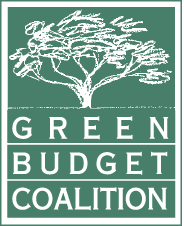As communities, businesses, and industries increasingly integrate nature-based solutions to address global challenges like climate change and biodiversity loss, conservation experience is becoming crucial for youth entering the workforce. Historically, the conservation sector in Canada has lacked diversity, but that trend is changing. Indigenous people, racialized youth, youth with disabilities, and those facing employment barriers are finding opportunities in conservation careers. Investing in youth employment programs can yield local community and economic benefits, enhanced ecosystem wellbeing, career paths for youth, and improvements in mental and physical health, fostering inclusion and belonging.
The Green Budget Coalition is pleased with the proposed allocation of $351.2 million in 2025-26 for Canada Summer Jobs and the Youth Employment and Skills Strategy (YESS) program to support 90,000 youth jobs, as well as the government’s intention to launch consultations for a Youth Climate Corps program. However, the effectiveness of the YESS program is limited by specific requirements, such as restricting full-time terms to a maximum of three months and eligibility criteria preventing the extension of work terms.
The Green Budget Coalition recommends that the government continue and enhance support for conservation and other organizations by addressing these limitations.
Recommended Investments and Improvements [ESDC with PC and ECCC]:
- For the Youth Employment and Skills Strategy and Canada Summer Jobs programs:
- Amend the program funding rules to allow all work terms to be at least six months long, full-time, at geographically-appropriate wage levels;
- Amend the program participant eligibility rules to permit the extension of currently funded positions to six months before requiring participants to transition to new roles;
- $80 million in 2025-26 to enable 20% of work terms to be extended to 6-8 months, while maintaining the same number of hires; and
- $500 million per year, ongoing, starting in 2026-2027, to create permanent funding allowing 25% of young people hired to be employed for roughly 6-8 months.
- Collaborate with environmental NGOs and funding communities to increase match funding and expand the reach and benefits of these programs for youth employment in the environmental sector.
See also recommendations for the Youth Climate Corps in Sustainable jobs for workers and communities, earlier in this document.
